Shade-Tolerant House Plants That Feel Great, Even in Winter
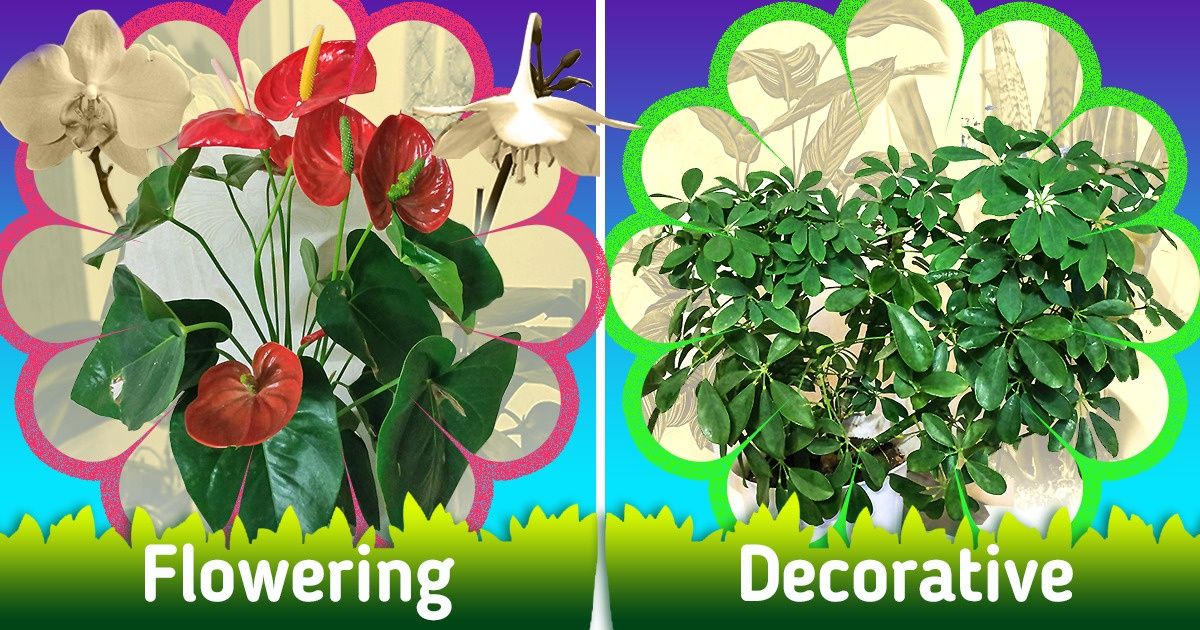
The plants that feel good in places where there’s little light will grow well in rooms with windows facing east and west. It’s good if there are a couple of windows giving diffused light. It’s important to understand that even the most tolerant plants will have a hard time living in a room with only 1 window facing north. But in this situation, you can help plants by turning on lamps for several hours every day.
5-Minute Crafts is going to help you create a winter garden, even in a room with little light. And remember that just because a plant is shade-tolerant doesn’t mean it doesn’t need light at all. It’s just that it doesn’t need direct sunlight.
Flowering
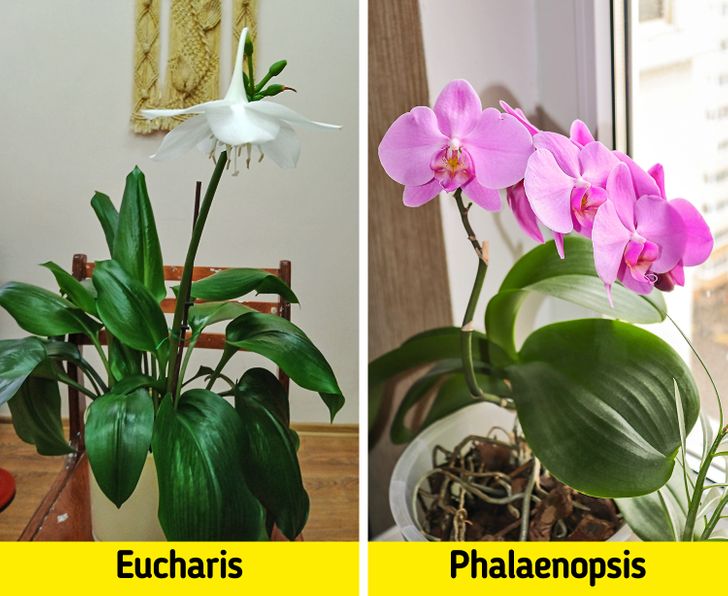
- Eucharis (Amazon lily) — it looks like a daffodil and has big wide leaves and white flowers. It’s good for a warm shadowy corner with a bit of diffused light. You can use lamps for better flowering.
- Phalaenopsis (orchid) — this is one of the most popular kinds of orchids because it doesn’t require a lot of care, and it blooms for 2-3 months. It needs a lot of humidity (60%-70%) and low-light conditions.
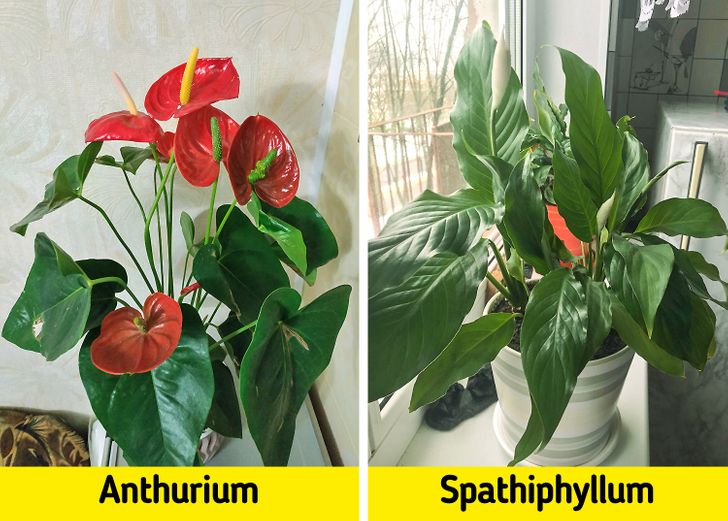
- Anthurium — this is a genus of tropical plants with bright flowers and lush foliage. These plants can be grown indoors in high humidity and need consistently moist but not soggy soil. A location that receives bright, indirect light is best. Direct sun can burn the leaves.
- Spathiphyllum (peace lily) — this has big green leaves and elongated white flowers. This plant cleans the air well, blooms for the entire year, and doesn’t need any special care. It’s great in low-light conditions.
Decorative
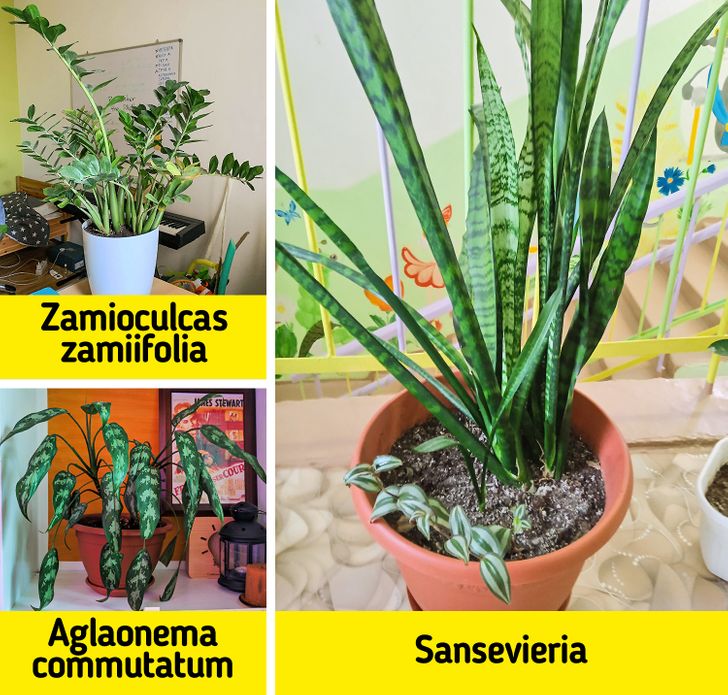
- Zamioculcas — this is a succulent that is great for rooms with little light. It can survive even without natural sunlight in theory. You can often see it in rooms without light. But it grows best with diffused light.
- Aglaonema (Chinese evergreen) — it features oval, glossy green leaves on short stems. These evergreens do well in shade, making them excellent low-light indoor plants. Place them out of direct sunlight as it can burn the foliage.
- Sansevieria (snake plant) — it has wavy patterns on the leaves that look like snakeskin. It can survive in very low-light conditions and with little water. Even if you forget to water it, it won’t die.
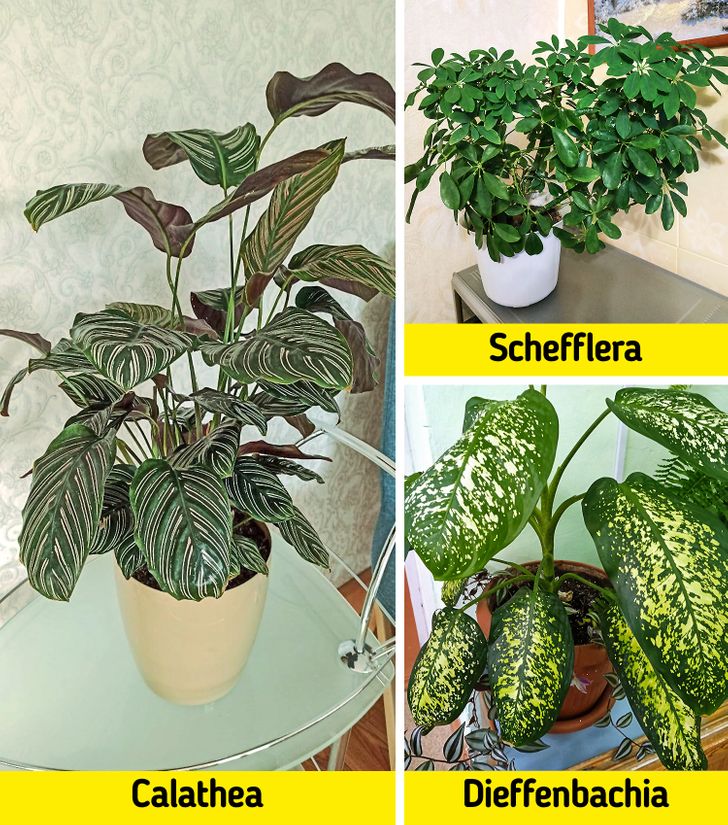
- Calathea — it has beautiful leaves with patterns. In ample conditions, this plant can grow up to 3 feet in height with wide leaves. Though it is a slow grower, once it reaches its ultimate height, it will stop growing.
- Schefflera — it feels great in low-light conditions. It will grow in artificial light if you keep it within 30 cm from the lamp. If it grows too slowly, it probably needs more light.
- Dieffenbachia — it comes in green, yellow, variegated, and white varieties that brighten your space and purify your air. Also, you can basically put this plant anywhere since it grows equally well in low light, medium light, and direct light.
Lianas and ampels
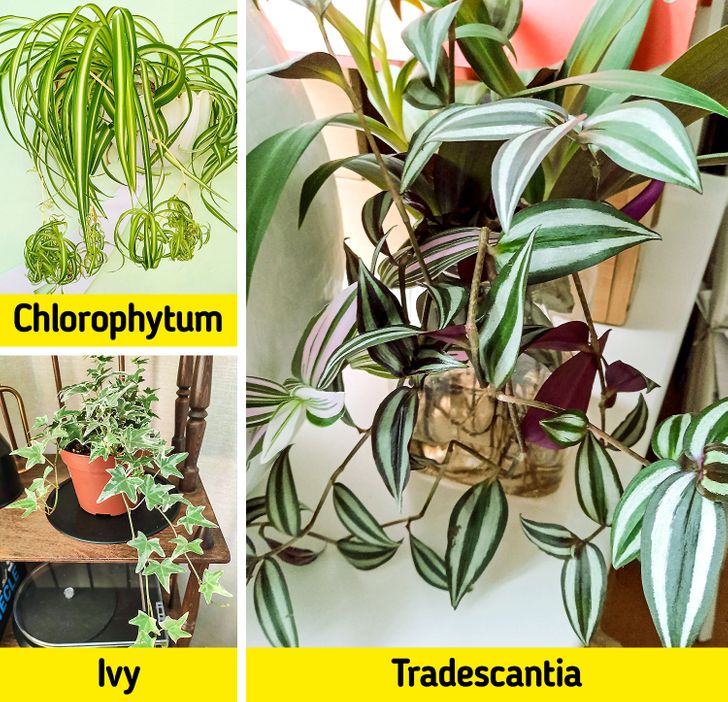
- Chlorophytum (spider plant) — it’s one of the most adaptable and easy-to-grow houseplants. It bears this name because of its spider-like offshoots, or spiderettes, which dangle down from the parent plant like spiders on a web. Spider plants can be grown as hanging or trailing plants in baskets or pots. They will survive for a long time in less-than-ideal light conditions, including artificial light. Make sure to water it regularly to prevent the soil from drying out.
- Ivy — this is a plant that can be placed like a vine. It’s adaptable and grows well in dim or medium light. It has to dry completely between the times you water it.
- Tradescantia — it has unusual, variegated leaves in green, purple, and silver. It has a trailing habit, so it looks great in a hanging planter or on a shelf. It does best in a warm spot out of direct sunshine. It does well in shade but may lose its leaf variegation.
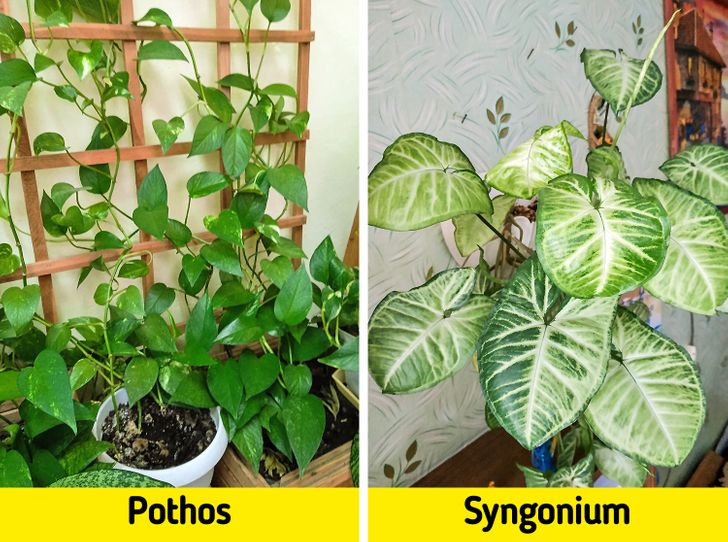
Ferns, palm trees, and small trees
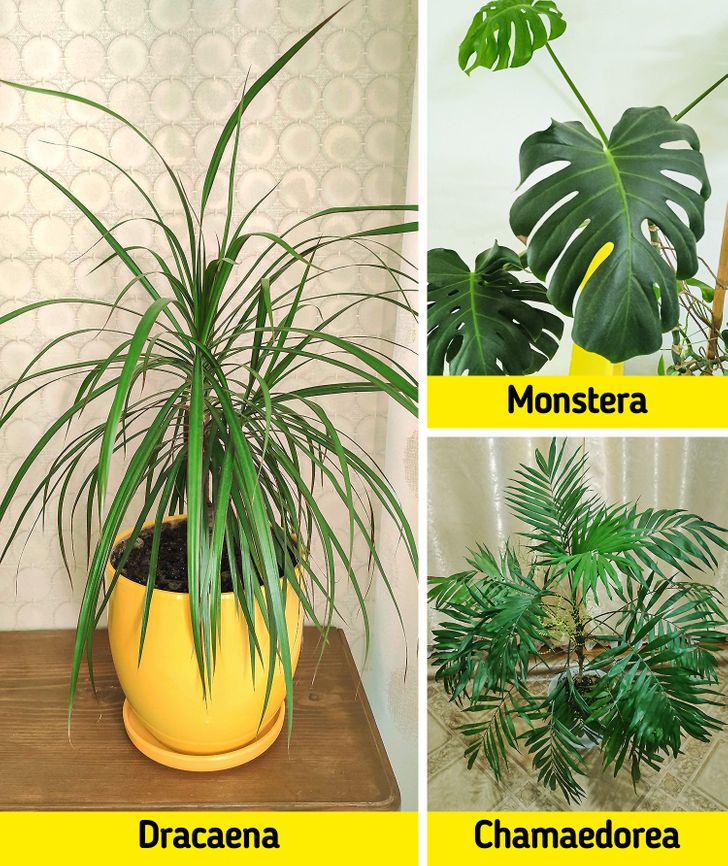
- Dracaena — the low-maintenance plant bears this name because of the red resin that forms in the stems of the plant, which was said to resemble dragons’ blood. Dracaena plants hail from Madagascar and are perfectly at home in a semi-shady spot or in filtered light (like through a sheer curtain, for example). Placing these plants in direct sunlight is, in fact, bad for them.
- Monstera — it has huge green leaves with holes in them. These plants grow naturally in shady conditions and tend to do well with bright, indirect light indoors. Too much light can burn the foliage.
- Chamaedorea — it’s a great choice for rookie gardeners as it’s easy to take care of and adaptable to low light.
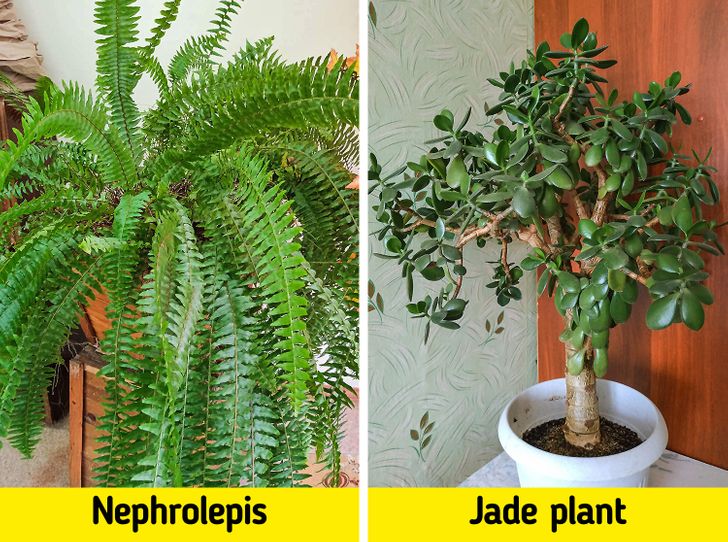
- Nephrolepis— it’s an easy-to-grow house plant performing best in a bright spot out of direct sunlight. It thrives in a humid environment, so a steamy bathroom is ideal.
- Jade plant — it’s a succulent with round leaves that look like coins. Easy to take care of, it doesn’t need much water and loves dryness. It can grow under direct sunlight.
Share This Article